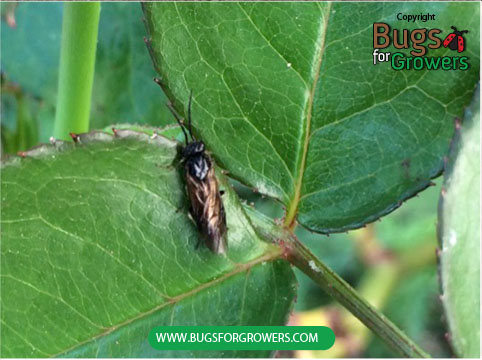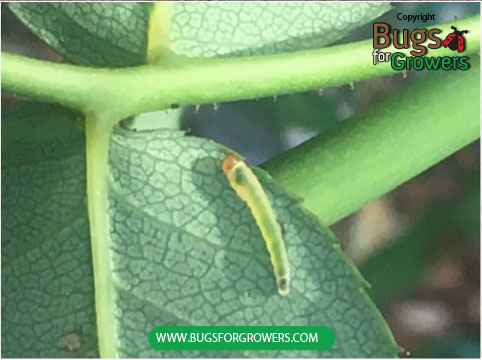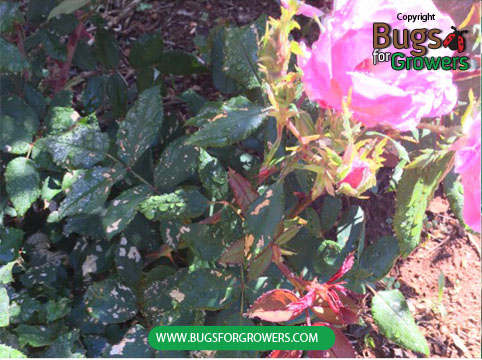What are rose slugs?
The larvae of sawflies (Endelomyia aethiops) are commonly called roseslugs because they feed on the leaves of both wild and cultivated roses, and resemble slugs due to slimy substance secreted by them over their body surface. Also, sawflies are not true flies as they do not belong to an insect order, Diptera that includes house flies and fruit flies instead they belong to the order of Hymenoptera that includes wasps, honeybees and ants.
Adults of sawflies are dark black in color, about 0.25 inch long and look like small flies/wasps (Photo 1). They are called sawflies because their females use ovipositors (egg depositing organs) to saw a small slit in a leaf or stem where they lay their eggs.

Eggs hatch into small larvae that are greenish- yellow in color (Photo 2) and fully grown larvae are about 0.75 inch long with light orange head capsule. Hatched larvae start feeding on the leaf tissue and develop through more instars and matures from the end of April through May.
Mature larvae fall to the ground where they spin cocoons in the soil where they remain dormant in the cocoons until next spring. In the spring, larvae pupate and emerge as adults early in the April and life cycle continues (see above).

Damage
The larvae of sawflies are known to cause severe damage on the leaves of both wild and cultivated roses generally from the end of April through May. All larval stages of sawflies feed on the soft green tissue from the undersurface of leaves of roses and leave behind the papery surface of the leaves (Photo 3). This windowpane appearance (Photo 3) can turn into skeletonization of leaves quickly when a large number of larvae feed at the same time on the same leaves.

Mechanical and Biological Control
When you start noticing the symptoms of damage on the surface of leaves (Photo 4) and if you have few rose bushes, hand-pick larvae from the lower surface of leaves and kill them by squeezing them between your fingers.

If you have lots of rose bushes and they are heavily infested with roseslugs, release beneficial biological control agents including green lacewings (Photo 5), ladybugs (Photo 6) and praying mantis (Photo 7) in your yard.
These biological control agents are predatory insects that voraciously feed on the larvae of sawflies as well as other soft bodied insects like aphids and whiteflies that are also known to cause severe damage to rose bushes. These predatory insects are commercially available, easy to release, and not harmful to humans and the environment.



